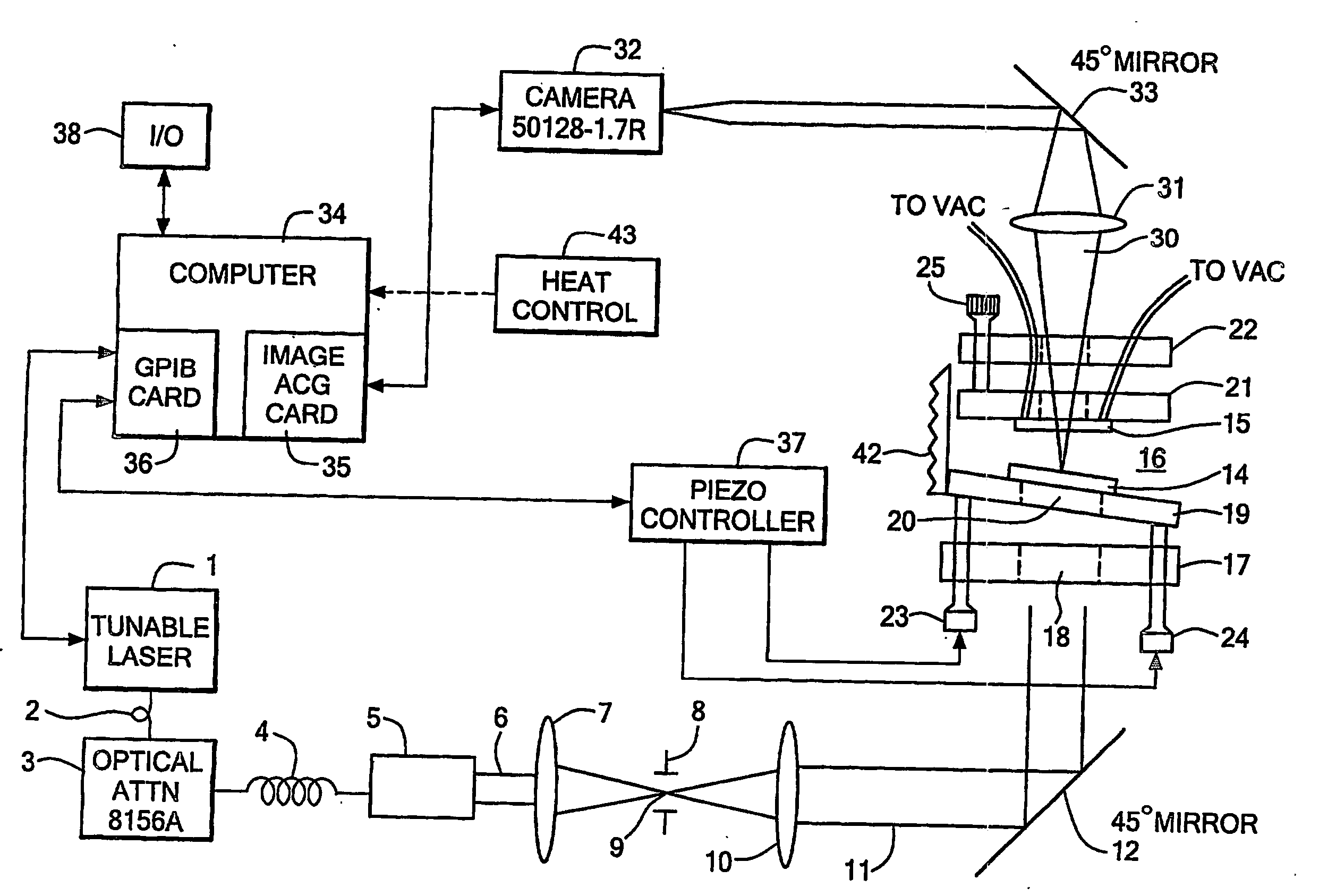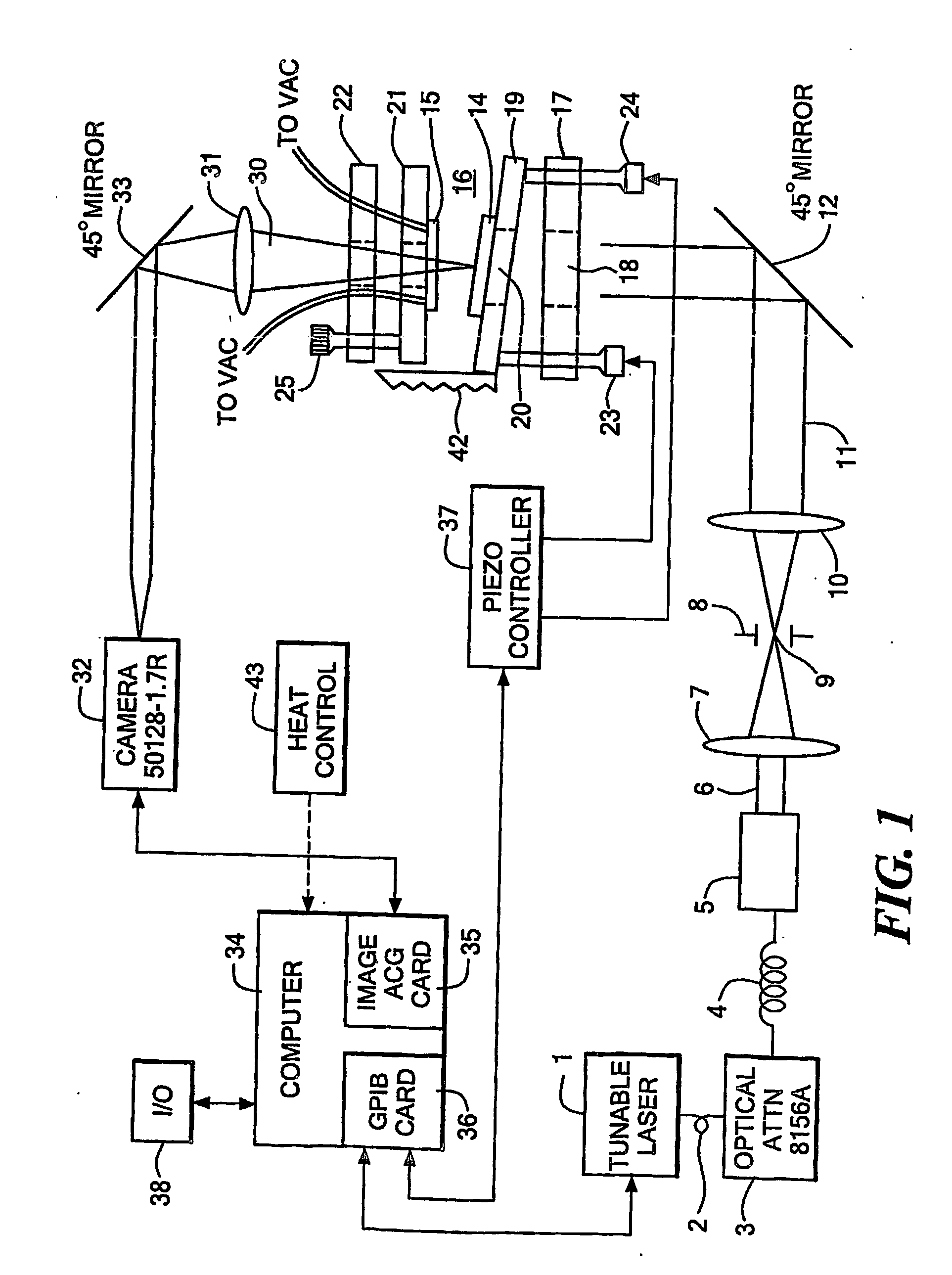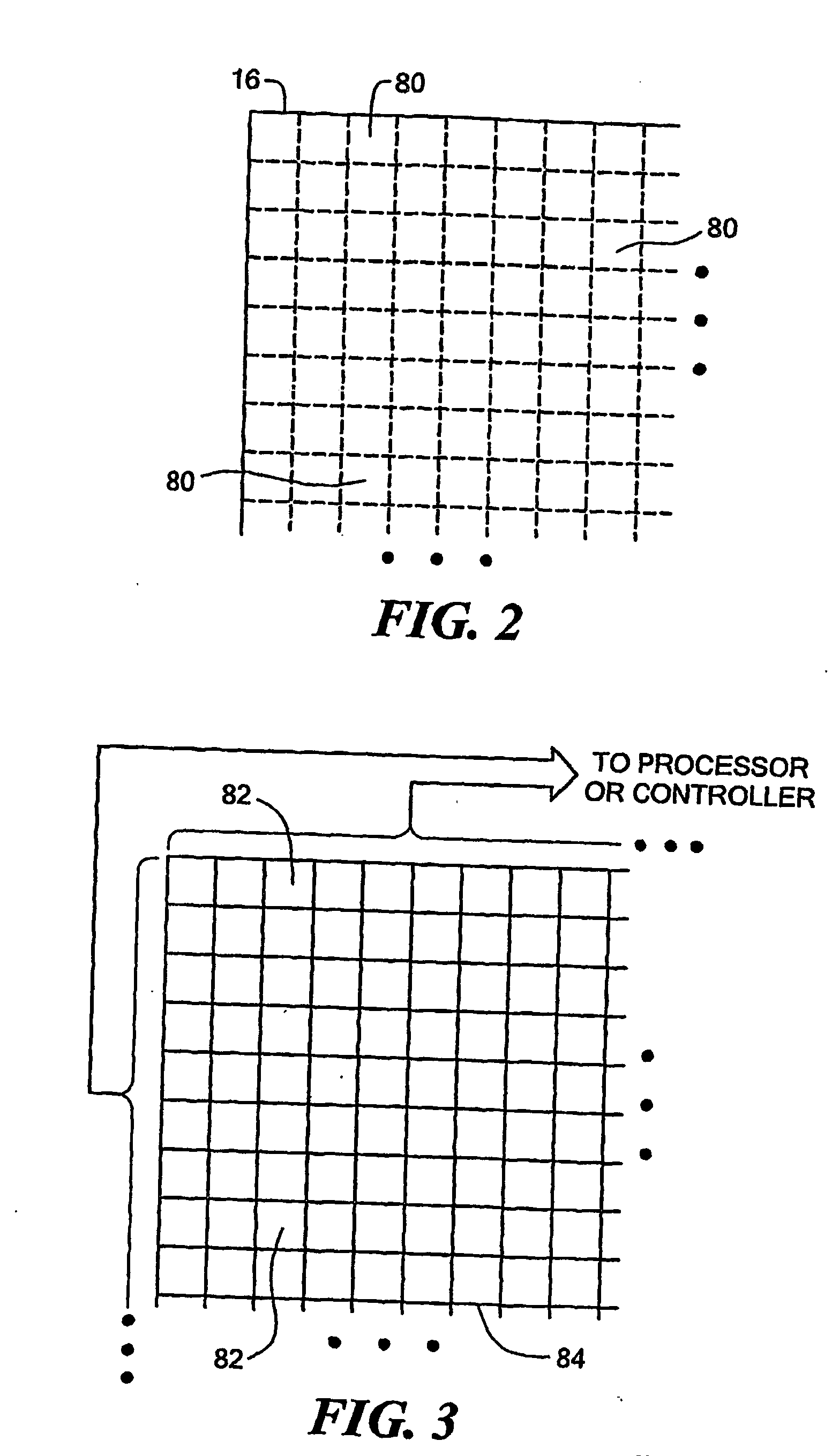Resonant cavity biosensor
a biosensor and resonance cavity technology, applied in laboratory glassware, fluorescence/phosphorescence, optical radiation measurement, etc., can solve the problems of adversely affecting the binding properties, real-time operations, and failure to provide high throughput of date, so as to avoid the complexity of metals and high throughput
- Summary
- Abstract
- Description
- Claims
- Application Information
AI Technical Summary
Benefits of technology
Problems solved by technology
Method used
Image
Examples
example
[0082] Fabrication of test sample: A test pattern has been fabricated in SiO2 to test that the system is working (FIG. 10A). 270 nm of SiO2 was deposited on the top surface of the first reflector. This SiO2 layer serves to place the sensing surface at a position in the cavity where the field strength is high (approximately 1 quarter wavelength out from the reflector surface at the wavelengths we are scanning at). The SiO2 surface was then masked and lightly etched to leave 4 square features. The 4 squares are 50 μm×50 μm and 30 μm apart. The pattern is repeated every 500 μm. The sample was masked at the boxes and wet etched everywhere else using HF to remove approximately 15 nm of material. 4 boxes 50 μm×50 μm×15 nm should remain on top of 255 nm SiO2, on top of the reflector.
[0083] Running experiment: Micrometers were used to position the reflectors close to each other to form the cavity. A z-stage was used to translate one of the reflectors to approximately 100 μm away from the o...
PUM
 Login to View More
Login to View More Abstract
Description
Claims
Application Information
 Login to View More
Login to View More - R&D
- Intellectual Property
- Life Sciences
- Materials
- Tech Scout
- Unparalleled Data Quality
- Higher Quality Content
- 60% Fewer Hallucinations
Browse by: Latest US Patents, China's latest patents, Technical Efficacy Thesaurus, Application Domain, Technology Topic, Popular Technical Reports.
© 2025 PatSnap. All rights reserved.Legal|Privacy policy|Modern Slavery Act Transparency Statement|Sitemap|About US| Contact US: help@patsnap.com



